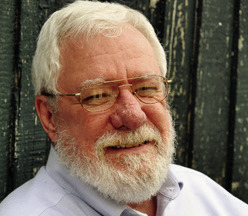White sails meant ‘season of excitement’
Berwick Bay and the rivers running from it were busy places in the middle 1800s, and in the view of a St. Mary Parish newspaper editor were the gateway to paradise. The bay was one of the few places between New Orleans and Galveston with water deep enough to allow bigger boats to come in from the Gulf. The Atchafalaya River and Bayou Tech connected it to the plantation country of south Louisiana.
In later years the bay became the westernmost point where large boats could connect with a rail line running from New Orleans to Brashear City (as Morgan City was then known). That made it a strategic point for shippers by the late 1850s and a much fought over point during the Civil War.
But the railroad had not yet been built and war clouds were not yet ominous in 1849 when a letter signed “S.C.R. Jr.” was published in The Planters’ Banner in Franklin, giving a glimpse into the flavor and character of a time when practically everything moved into or out of south Louisiana by water. At the time the letter was written, paddle- wheeled steamboats had been plying the Teche for three decades or more and at least as early as 1838 those bayou boats connected with ocean-going ships at the bay and as far up the Teche as New Iberia. It appears that the fall and winter months were the busiest for the big ships, possibly because Berwick Bay was much more pleasant than frigid ports in the North.

A traveler from New Orleans wrote in 1838 that “Franklin … imports direct from the North, and her wharves, in the winter season, are filled with brigs, schooners, and flatboats.” He said that the schooners sometimes went up as high as New Iberia. The Franklin newspaper regularly advertised that “a new schooner load” had replenished the stock at one store or another, S.C.R. Jr.’s September 1849 letter tells us, “In the winter [Berwick] bay presents a perfect panorama, Numerous steamers, brigs, and barks, with other smaller craft, are seen coming up the harbor under full sail; vessels are visible, too, along the bay and rivers, at plantations, discharging or receiving freight, and the alternately hoarse and shrill cries of the sailors and their merry songs sound oddly enough echoing through the woods.”
Planters’ Banner editor Daniel Dennett added his own observations. He said the sailing ships were one of the things that made the fall “a season of interest and excitement” that was “about to break in upon us like a refreshing shower after a severe drought.”
The boats, he said “are now beginning to move from the north deeply freighted with rich stores of merchandise with which to flood the country - the bosom of the Teche is soon to be whitened by the sails of northern vessels with gallant streamers floating high in the air - half a score of splendid steamboats will soon be ploughing their way through our lakes and bayous - the dull horn of the oysterman will soon announce the reappearance of salt water luxuries, and huge flatboats from the upper counties will, before many weeks, [begin] floating lazily upon the tide of the Teche.
“When this parish arrives at a high state of perfection in regard to the cultivation of our soil and the banks of these bayous and lakes are filled with beautiful greenery and the waving branches of ornamental trees and rich … shrubbery, and luxuriant and highly cultivated fields, and splendid dwelling houses, and smiling villages, the eye of the stranger will be captivated, and those who visit St. Mary will look upon these bayous, lakes and bays, whose borders will be clothed in all the rich beauties of nature and art, as the scenery of a perfect paradise, where the verdant images of romance have become realities and where Utopian dreams are no longer considered visionary.”
You can contact Jim Bradshaw at jimbradshaw4321@ gmail.com or P.O. Box 1121, Washington LA 70589.

